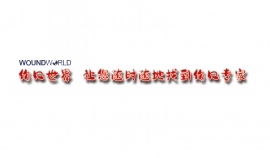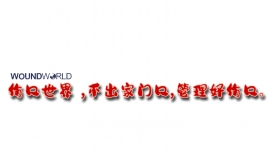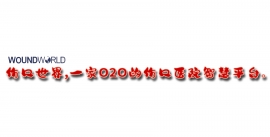文献精选
Background: In some patients, diabetic foot ulcers may heal slowly despite tight control of blood glucose and normal limb circulation, implying the presence of multifactorial, unidentified factors to wound healing. Previous efforts to identify these factors using binary variables, such as amputation or specific healing timelines, inadequately reflect the complexities of wound healing capacity.
Aims: We aimed to identify factors associated with delayed diabetic foot ulcer healing.
Methods: Eight factors were assumed to affect diabetic foot ulcer healing; patient age, age at the onset of diabetes, sex, peripheral arterial disease (PAD), HbA1c, smoking as measured by the Brinkman index (BI), dialysis and bone infection. They were analysed using linear regression and multivariable analysis against three healing indices: total healing period (THP), granulation time (GT) and time to contraction onset (TCO).
Results: PAD and BI correlated positively with all three indices. Patients with PAD exhibited significantly extended THP, GT and TCO. An increase of 100 in BI corresponded with a 1.53 day increase in GT.
Conclusion: PAD was associated with delayed healing according to every measure analysed, while BI was linked with slower granulation. Besides THP, the measurements of GT — and possibly TCO — could evaluate some aspects of healing capacity of diabetic ulcers.
Kazufumi Tachi
Senior Lecturer, Division of Plastic Surgery, Tohoku Medical and Pharmaceutical University, Sendai, Japan
Koichi Gonda
Professor, Division of Plastic Surgery, Tohoku Medical and Pharmaceutical University, Sendai, Japan
Takashi Kochi
Chief Surgeon, Department of Plastic Surgery, Sendai City Hospital, Sendai, Japan
Jyunya Niwa
Research Associate, Division of Plastic Surgery, Tohoku Medical and Pharmaceutical University, Sendai, Japan
Key words
● Diabetic foot ulcer
● New index of wound healing
● Brinkman index
Declarations
All authors have no conflicts of interest to declare.
Accurate skin assessment is key to pressure ulcer prevention. It has been shown that a lack of accurate assessment means that patients with dark skin tones are more likely to be diagnosed with higher-category pressure ulcers, leading to poorer outcomes (Oozageer Gunowa et al, 2017). This article highlights training and development carried out at the Christie NHS Foundation Trust in Manchester to incorporate skin tone awareness into aSSKINg bundle assessments and PURPOSE T pressure ulcer risk assessments, using the skin tone tool (Dhoonmoon et al, 2021).
Susy Pramod
Lead Tissue Viability Nurse, The Christie NHS Foundation Trust, Manchester
Jane Mayes
Honorary Tissue Viability Nurse, The Christie NHS Foundation Trust, Manchester; Clinical Education Manager, Essity
Katie Bowling
Tissue Viability Nurse, The Christie NHS Foundation Trust, Manchester
Ged McDermott
Tissue Viability Nurse, The Christie NHS Foundation Trust, Manchester
Key words
- Assessment
- Pressure ulcer
- PURPOSE T
- Skin tone
This systematic review and meta-analysis of 126 randomised controlled trials, published in Diabetes Care, identified that the weekly dose of physical activity required to optimise glucose-lowering in people with type 2 diabetes is 1100 Metabolic Equivalents of Task (MET)-minutes per week, and this remained consistent across a wide range of baseline HbA1c values.This is the equivalent of 36 minutes per day of moderate-paced walking, 244 minutes of moderate-intensity aerobic activity per week or 318 minutes of moderate strength training per week. Multicomponent activity (a mix of strength and aerobic activity), strength training and brisk walking were the most effective activities. Achieving the optimal weekly MET dose had greater effects in those with higher HbA1c at baseline, including up to a 1.02% reduction in those with an initial HbA1c >64 mmol/mol, and there was even a statistically significant 0.24–0.38% HbA1c reduction in those with prediabetes (HbA1c <48 mmol/mol) at baseline. These findings suggest that people with diabetes may need more physical activity than in the current generic recommendations of 150–300 minutes per week of moderate-intensity activity or 75–150 minutes per week of vigorous activity. Since we know that many do not achieve current recommendations consistently, helping people undertake these doses of physical activity is likely to need support from a multidisciplinary team, including exercise professionals and coaches, as well as from family and friends.
Pam Brown
GP in Swansea
Citation: Brown P (2024) Diabetes Distilled: Physical activity – how much is needed to optimise glycaemic control?
Diabetes & Primary Care 26: 241–3
David Morris, Probal Moulik
Symptoms of pancreatic cancer often present late, and most are non-specific and thus Misinterpreted. Although a rare condition, the prognosis for pancreatic cancer is very poor, with a 5-year survival rate of 7.3%; however, this improves to 30% for early-stage diagnosis. Prediabetes or diabetes are found in around 80% of people diagnosed with pancreatic carcinoma and, importantly, are often identified a year or two ahead of this diagnosed. Thus, new-onset diabetes represents an opportunity for early detection of pancreatic carcinoma. Through this case report of an older gentleman with new-onset diabetes and a normal BMI, the authors discuss how healthcare professionals can identify people who might be at risk of pancreatic cancer, along with the differential diagnoses, and what actions they should take.
Authors
David Morris, Retired GP and Specialist Doctor in Diabetes, Undergraduate Clinical Tutor, Keele University; Probal Moulik, Consultant Endocrinologist, Shrewsbury and Telford Hospitals NHS Trust.
Citation: Morris D, Moulik P (2023) Case report: Pancreatic cancer – assessing diabetes in a thin elderly person. Diabetes & Primary Care 26: 217–21
Case presentation
Simon, a 76-year-old man with a two-year history of type 2 diabetes, sought a private endocrinology consultation because of ongoing symptoms of weight loss and fatigue. He also reported loss of appetite but denied polyuria and polydipsia. There had been no significant abdominal pain and no change in bowel habit.
Metformin had been commenced shortly after the diagnosis of diabetes but was discontinued because of gastrointestinal intolerance. Dapagliflozin had been tried but was stopped because of continued weight loss. Simon was now taking alogliptin but good glycaemic control remained evasive.
Past medical history: Hypertension; dyslipidaemia; peripheral vascular disease.
Medication: Amlodipine 5 mg once daily; atorvastatin 20 mg once daily; clopidogrel 75 mg once daily; alogliptin 25 mg once daily.
Social history: Retired; non-smoker; alcohol 9 units/week.
Family history: One brother with type 1 diabetes; one brother with diet-controlled type 2 diabetes; one brother with pancreatic cancer.
Examination: Blood pressure 128/67 mmHg; BMI 19.4 kg/m2 . Cardiovascular and respiratory systems unremarkable. Abdomen – palpable liver edge, no other masses.
What is your clinical assessment of the situation?
What further investigations would you consider?



